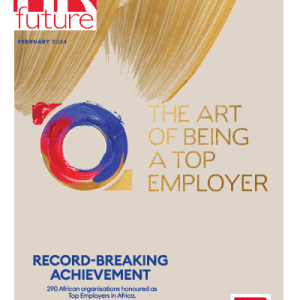Technology has sparked some of the most significant societal changes in recent history. From revolutionizing how we communicate to reshaping global economies, its impact is undeniable.
But here’s the million-dollar question: How can we harness this incredible force to create a more inclusive workforce? Spoiler alert: it’s not just about handing out free tablets.
Creating a diverse and inclusive workforce is no longer a “nice to have.” It’s a business imperative. Companies with inclusive cultures are 1.7 times more likely to be innovation leaders in their markets. That’s no coincidence. Technology is proving to be a game-changer in this space, enabling people from all walks of life to access opportunities and thrive.
The Role of Technology in Breaking Barriers
Barriers to workforce participation are as diverse as the workforce itself. Physical disabilities, geographic isolation, lack of access to education, and even cultural biases can hold people back. Technology, however, has been busy playing superhero.
1. Accessibility Tools: Leveling the Playing Field
Inclusion starts with access. Tools like screen readers, voice-to-text software, and adaptive devices have revolutionized opportunities for people with disabilities.
Companies like Microsoft are pioneering AI-driven accessibility tools that make the digital workspace navigable for everyone. Imagine trying to read this article without being able to see. Tools like these make that possible.
Not to sound like an infomercial, but it’s true: With a good Wi-Fi connection and the right software, someone with a disability can excel just as much as anyone else.
2. Remote Work: Geography? What Geography?
Gone are the days when a job meant moving to a big city. Remote work has shattered geographic barriers, bringing opportunities to small towns, rural areas, and even tropical islands (assuming you have Wi-Fi and a solid sunscreen game).
Platforms like Zoom, Slack, and Microsoft Teams make it easy for teams to collaborate, no matter where they are.
For someone in a remote village who might not have had access to a traditional office job, this is like discovering a hidden door to Narnia. Minus the talking animals.
3. E-Learning: Knowledge at Your Fingertips
Education is the great equalizer, but not everyone can afford Ivy League tuition or even a local community college. That’s where e-learning platforms like Coursera, Khan Academy, and Udemy shine. These platforms bring top-tier education to anyone with an internet connection.
Want to learn coding? There’s an app for that. Want to upskill in data science or graphic design? There’s a course for that too. The best part? Many of these resources are free or highly affordable, making education accessible to millions.
Bridging the Digital Divide: A Work in Progress
Not to be a buzzkill, but technology isn’t a magic wand. The digital divide where access to technology varies greatly by income, geography, and other factors, remains a significant challenge.
Let’s talk about the elephant in the room: Not everyone has reliable internet or access to modern devices.
Tackling Infrastructure Gaps
Governments and private companies need to step up their game if we want to bridge the digital divide. While initiatives like Starlink and community Wi-Fi projects are a good start, they barely scratch the surface of what’s needed.
Infrastructure gaps, especially in rural and underdeveloped regions, continue to leave millions disconnected from opportunities. Expanding broadband access requires investment and innovative approaches tailored to specific communities. Think local hubs powered by renewable energy or mobile networks adapted to remote terrains.
Collaboration between tech giants, local governments, and even grassroots organizations can amplify the reach of these efforts. After all, what good is an online course, a remote job, or a telehealth appointment if you’re stuck with buffering screens and “no internet connection” warnings?
It’s like building a state-of-the-art library in the middle of nowhere and forgetting the roads to get there.
Addressing Tech Literacy
Providing devices and the internet is only half the battle. Maybe less than half. Many people, especially older adults, those from underprivileged backgrounds, or even professionals re-entering the workforce, don’t know how to use these tools effectively.
Without tech literacy, owning a smartphone or a laptop is like having a car without knowing how to drive. Programs that teach basic skills, such as how to navigate the internet safely, use productivity tools, or troubleshoot common issues, are essential.
Community centers, libraries, and non-profits play pivotal roles in delivering these programs, but they need more resources and visibility. Businesses can pitch in too by offering workshops or partnering with schools to integrate digital skills into curricula. It’s like handing someone a fishing rod instead of a fish. Except this rod comes with Wi-Fi and a tutorial on YouTube.
Artificial Intelligence: The Good, the Bad, and the Inclusive
AI is the cool kid in the tech world, and for good reason. Its potential to enhance workforce inclusivity is enormous.
AI for Recruitment: Breaking Biases
Traditional hiring processes often come with biases, conscious or not. AI can help level the playing field by focusing on skills and qualifications rather than factors like age, gender, or ethnicity. Tools like Pymetrics and HireVue use algorithms to match candidates with roles based on their capabilities, not their demographics.
But let’s not put AI on a pedestal just yet. If trained on biased data, AI can perpetuate the inequalities it aims to solve. It’s like teaching a parrot to talk and then realizing it’s repeating all your bad jokes. Vigilance and transparency in AI development are key.
Personalized Learning and Development
AI-powered platforms like Duolingo, Skillsoft, and Coursera do more than just deliver content. They tailor learning experiences to individual needs. Imagine having a tutor who knows when you’re breezing through a subject or struggling with a specific concept, and adjusts lessons accordingly.
This kind of adaptability ensures everyone gets the most out of their education, regardless of their starting point. For a single mom balancing two jobs, this might mean short, bite-sized lessons she can tackle between errands.
For a college student exploring new fields, it means deeper dives into topics of interest at a self-chosen pace. Whether it’s brushing up on data science skills or navigating topics like Medicare Plan G pros and cons, these platforms adapt to make learning easier and more accessible.
Success Stories: Proof It Works
Still skeptical? Let’s look at some real-world examples.
SAP: Hiring Neurodiverse Talent
SAP’s Autism at Work program is a masterclass in inclusive hiring. By using technology to adapt roles and create supportive environments, SAP has successfully integrated individuals with autism into their workforce. The result? Higher productivity and innovative solutions. Who says different can’t be better?
Starbucks: Making Accessibility a Priority
Starbucks has introduced apps and tools to ensure its stores and corporate offices are accessible to everyone. From real-time sign language interpreters to adaptive hiring tools, the coffee giant is proving that inclusivity isn’t just a buzzword. It’s a business strategy.
The Way Forward: Collaboration Is Key
No single entity can achieve workforce inclusivity alone. Governments, businesses, educators, and communities must work together to make it happen. Collaboration is the secret sauce that can turn good intentions into tangible outcomes.
Policies and Incentives
Governments can play a crucial role by offering tax breaks and grants to companies prioritizing inclusivity. Think of it as a win-win: companies get financial incentives, and society reaps the benefits of a diverse workforce.
Partnerships with NGOs
Non-profits often have deep connections with underprivileged communities. Partnering with them can help companies reach a more diverse talent pool while making a positive social impact. It’s like killing two birds with one stone. Though maybe let’s not use that phrase around animal lovers.
Conclusion: The Future Is Bright (and Inclusive)
Technology has given us tools that our ancestors could only dream of. While challenges remain, the opportunities to create an inclusive workforce are greater than ever. By combining tech innovation with human compassion, we can build a future where everyone can sit at the table, and maybe even a Wi-Fi password.
So, let’s get to work. After all, the future won’t build itself. Or, if it does, we’ll still need someone to program it.
Guest writer.


























